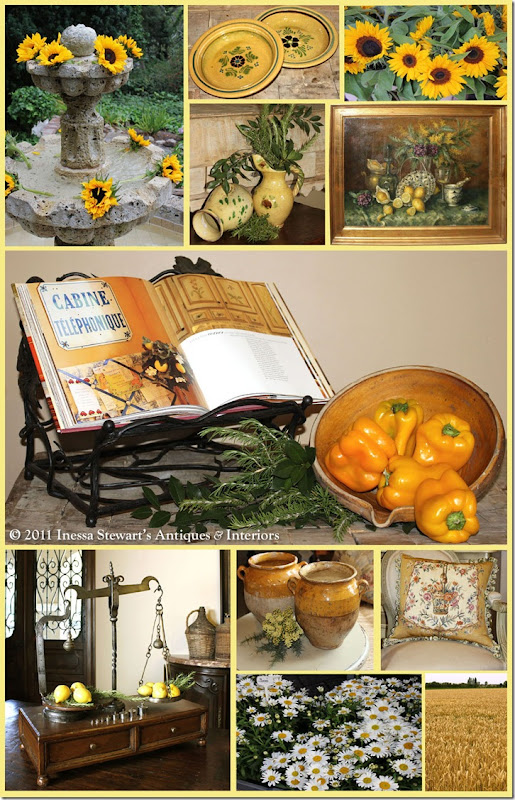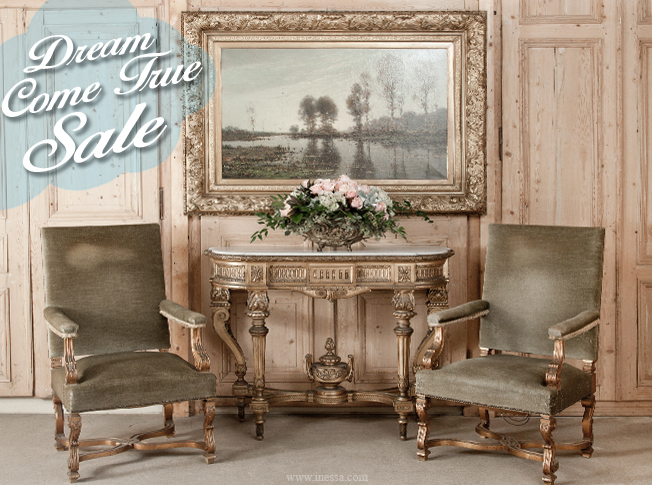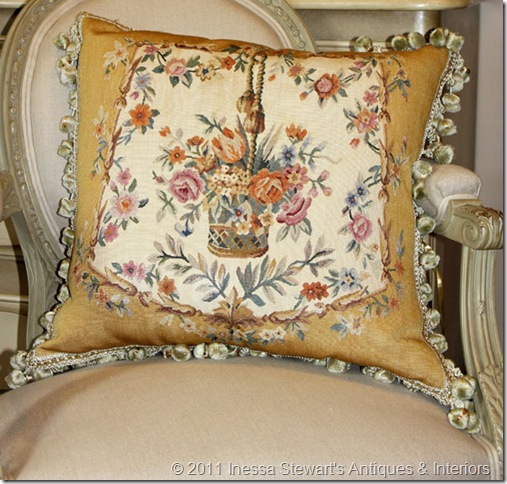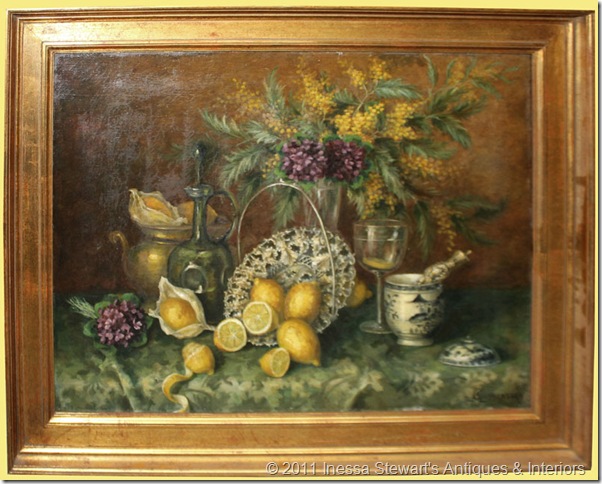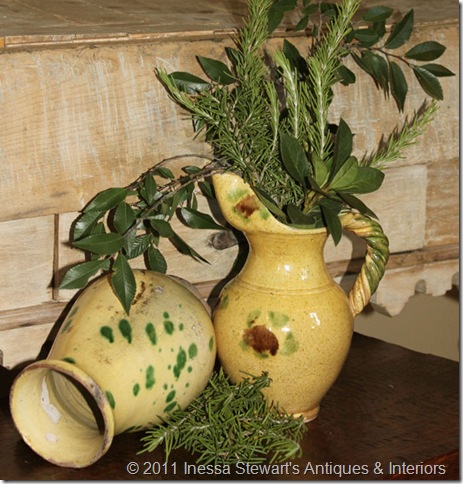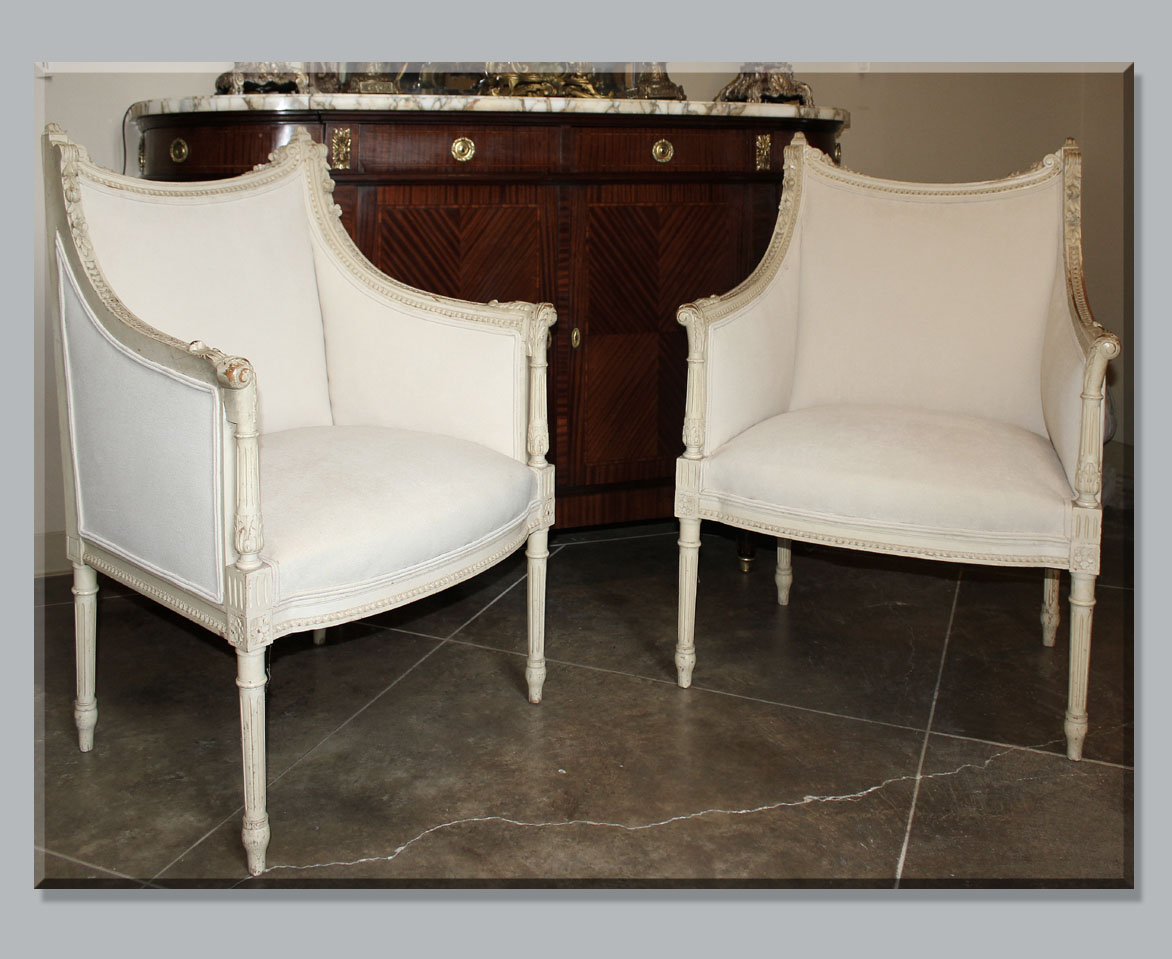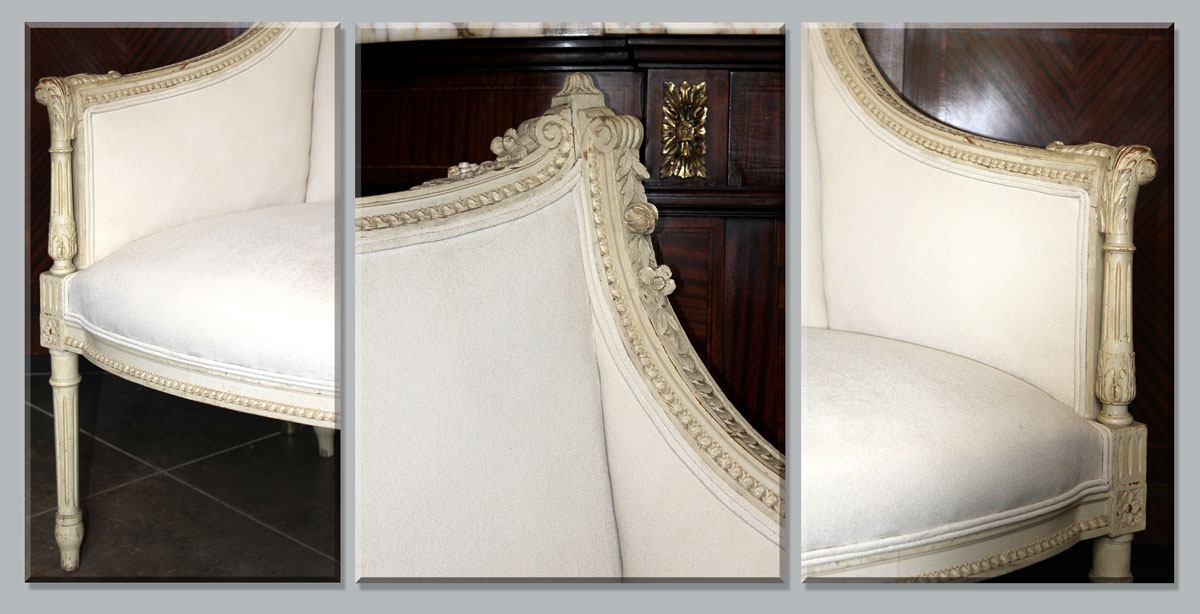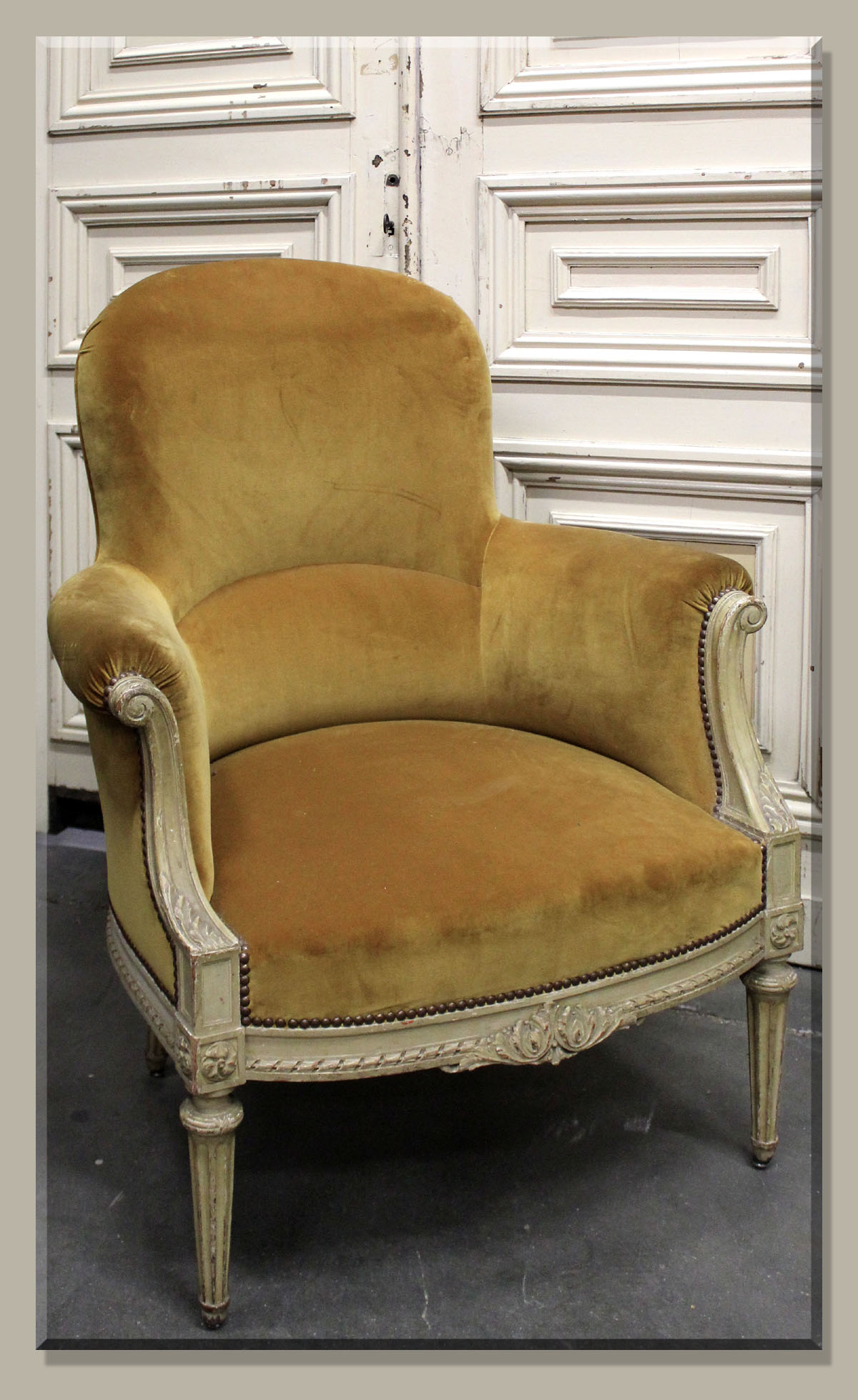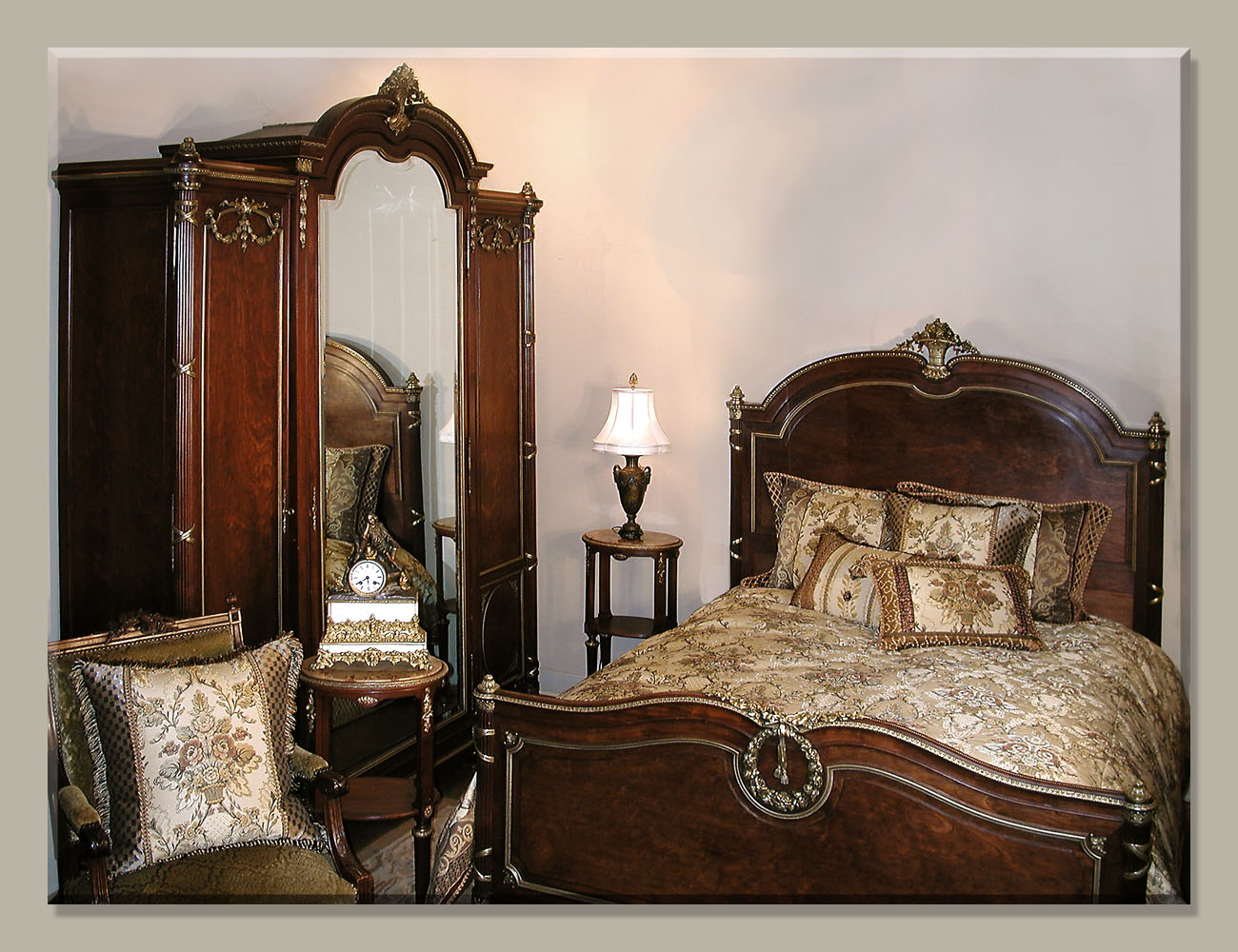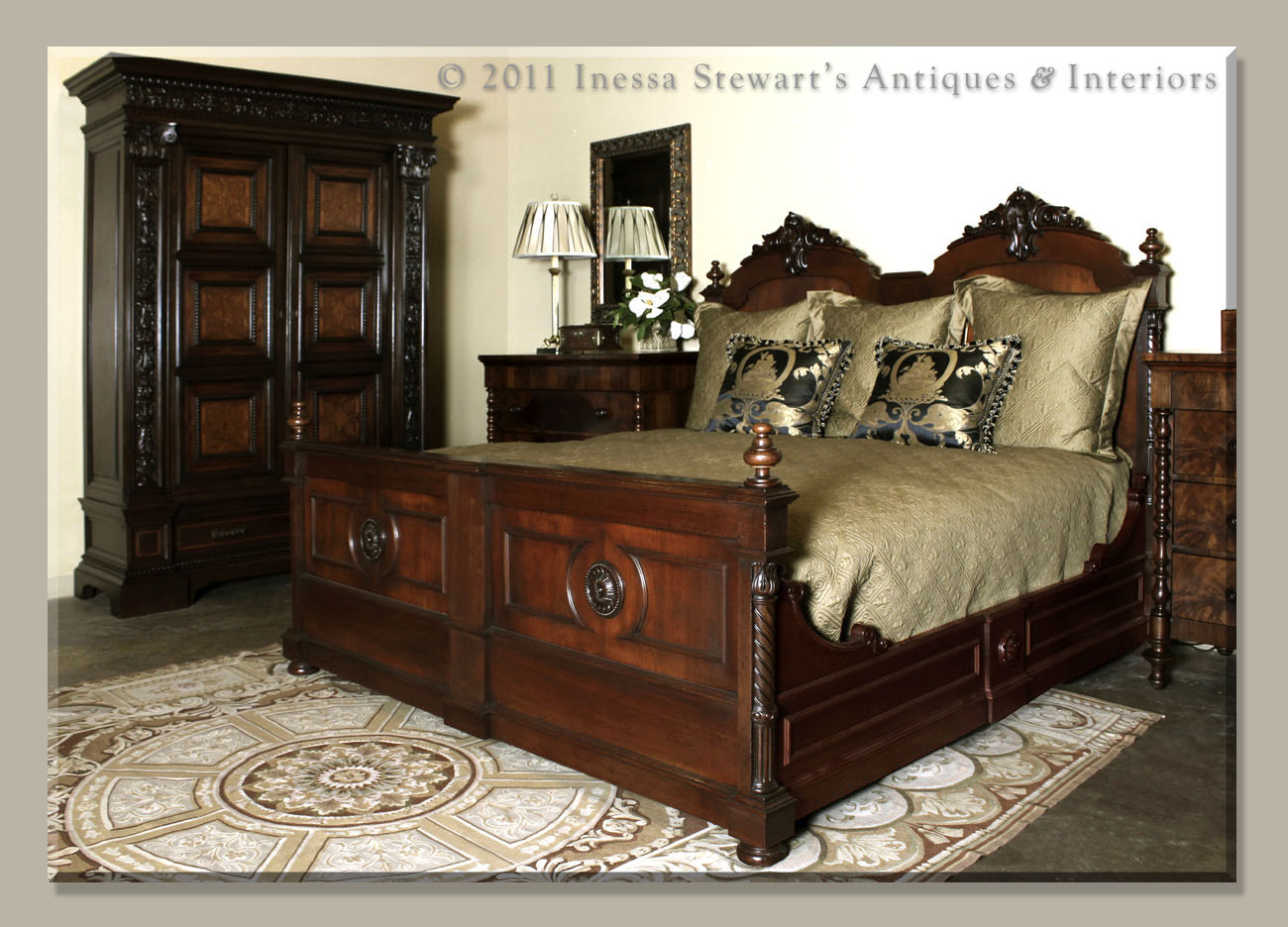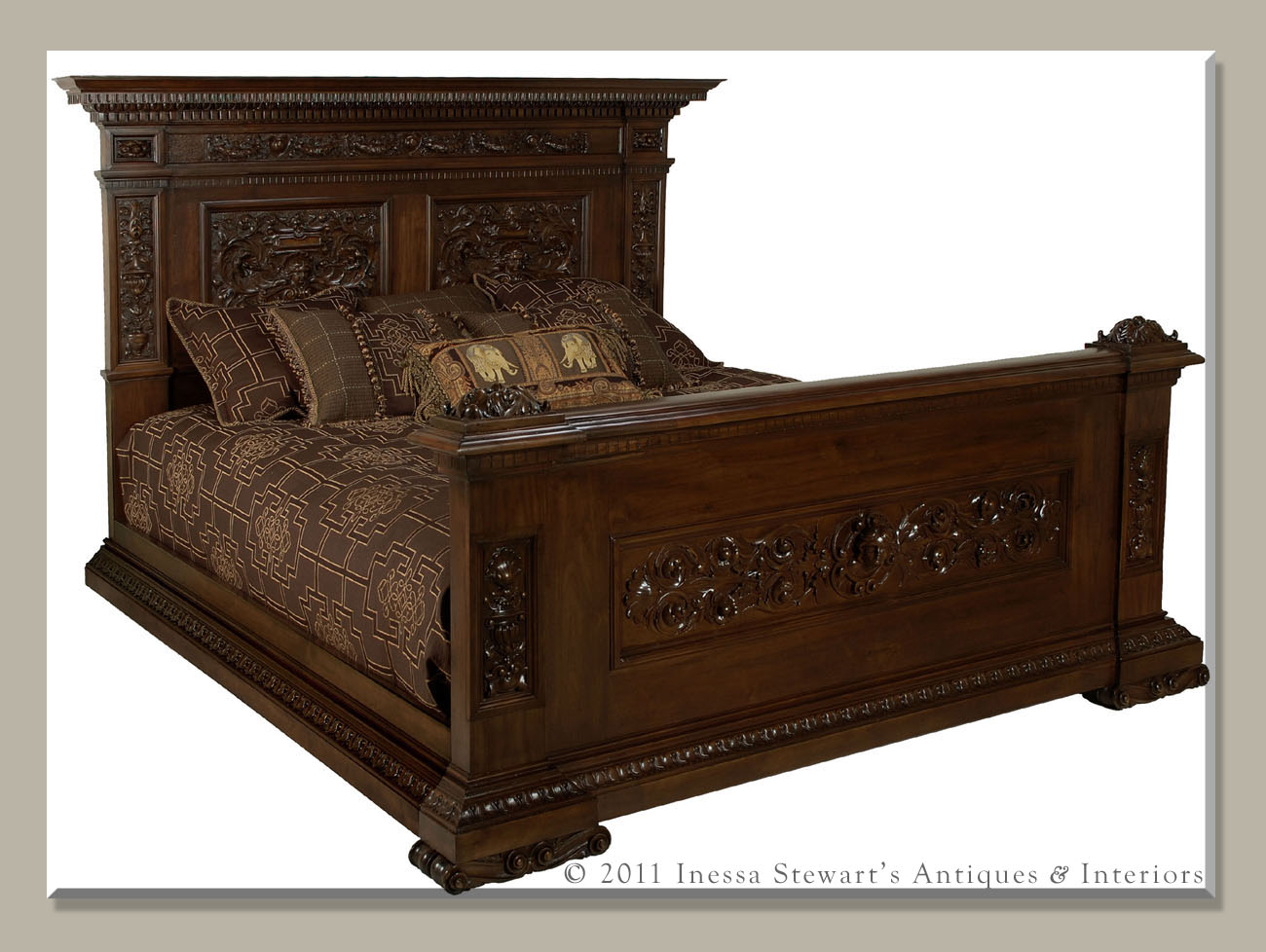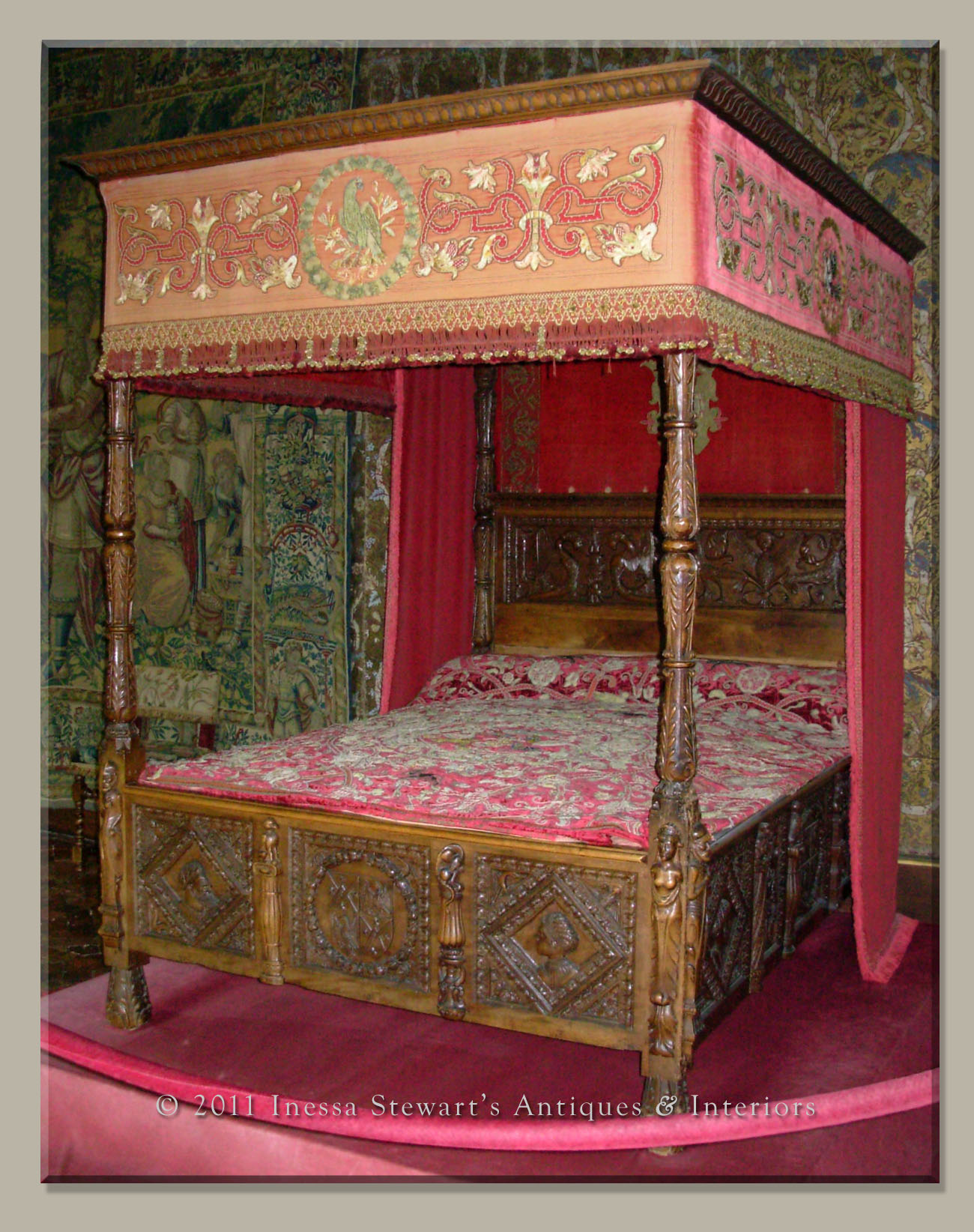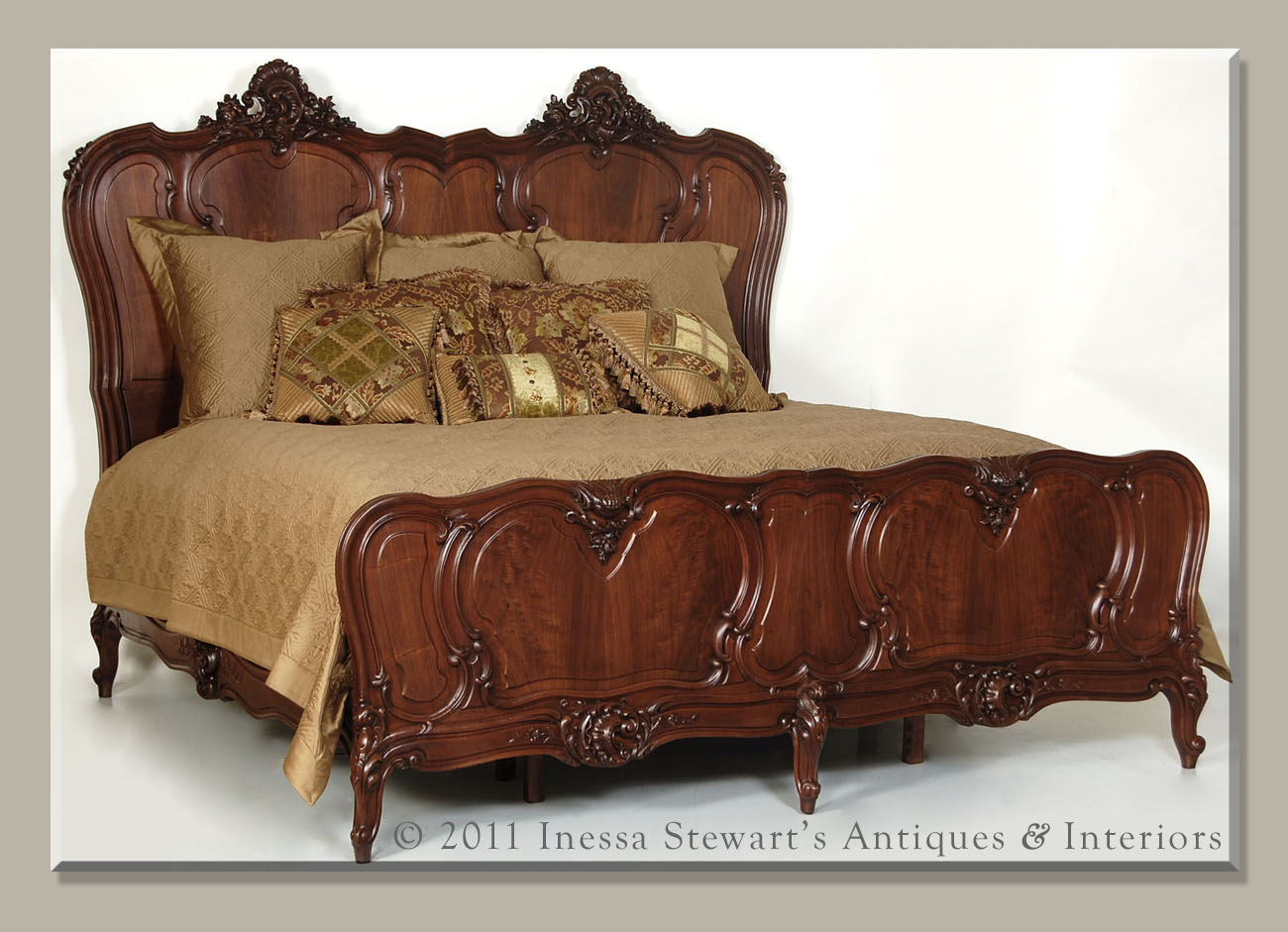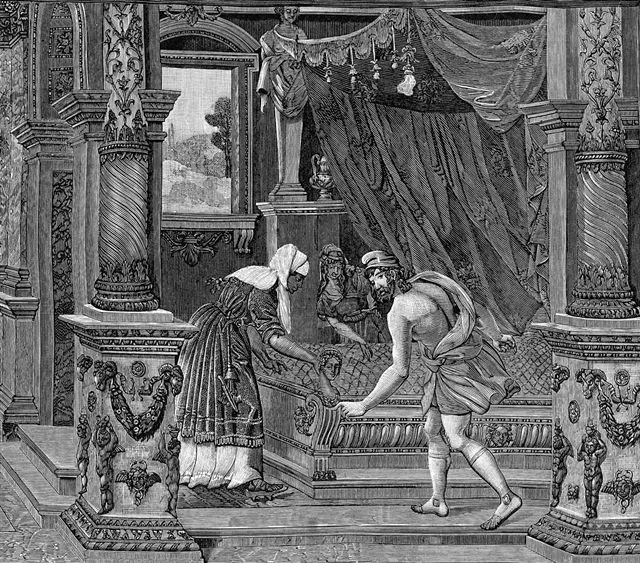 It’s been a great and super-busy summer! We have been traveling a great deal between antique buying trips to Europe and our niece’s wedding in California. Nothing like traveling gets your creative juices flowing, and then inspiration springs forth!
It’s been a great and super-busy summer! We have been traveling a great deal between antique buying trips to Europe and our niece’s wedding in California. Nothing like traveling gets your creative juices flowing, and then inspiration springs forth!On my recent flight to Europe for antique buying, I stocked up with the latest design magazines before the flight. I love to keep up with the latest trends and colors, and of course I’m always open to new ideas.
The cover of Elle Décor displayed cool summer neutrals with the blending of sea blues and soft greens. Inside, a one-page feature, the Trend Alert featured the color yellow, bright and sunny ~ just like summer.
Everywhere I went I could see the bright and cheerful color of the summer sun reflecting in fields of wheat, rows of sunflowers, even the flowers and produce at the Farmer’s Market. Yellow ~ one of the primary colors of Country French design ~ reflects in Country French antique pottery, faience designs, culinary antiques, and Provencal fabrics. In fact, whole exteriors of homes in Provence are often painted with soft buttery yellow.
In the 70’s I adored the color yellow, so much so that it was the color of my first car. Of course, as I got older (and hopefully wiser) I learned that seasonal trends are great to incorporate as an accent. There is no need for a total color commitment.
Alas, summer is almost over. So, if you didn’t get enough of the color of sunshine, here are a few antique and décor ideas~ some of which I just found on my most recent buying trip~ on how to add this cheerful hue to your interior any time of the year.
